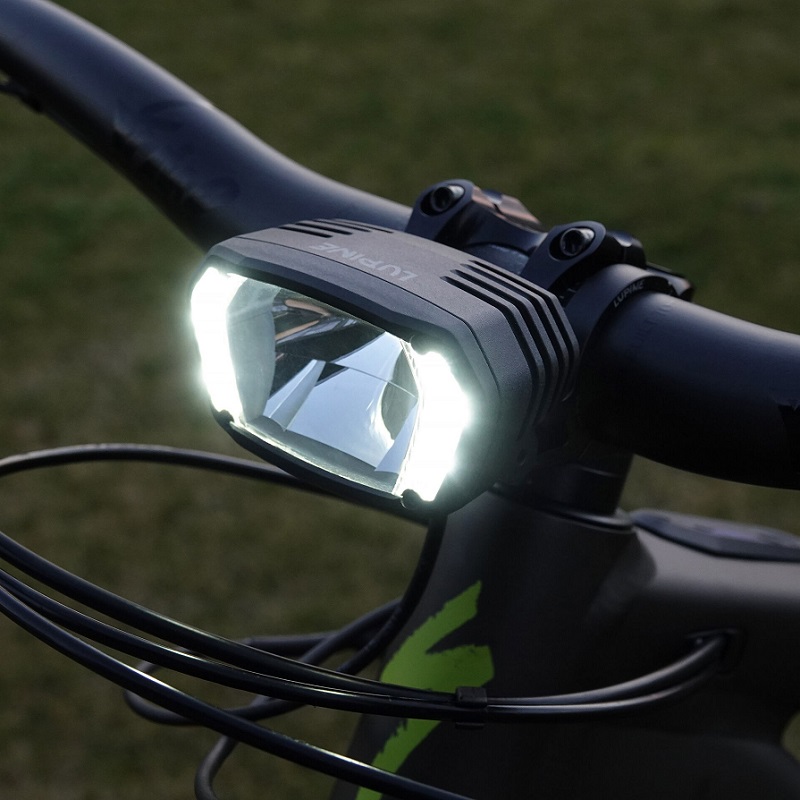The Importance of Road Bike Lights for Night Rides
As avid cyclists know, riding at night presents unique challenges, especially concerning visibility and safety. Road bike lights are essential tools for night riding, ensuring that you can see the road ahead and that other road users can see you. With various types, sizes, and brightness levels available, selecting the right bike lights can significantly impact your night rides. Whether you’re commuting through busy streets or exploring serene forest trails, proper lighting can make all the difference.
This article aims to guide you through the process of choosing the best road bike lights for your needs. We will cover different types of lights, their features, and essential safety tips that will enhance your riding experience after dark. By the end of this article, you will have a comprehensive understanding of road bike lights, enabling you to make informed decisions for a safer and more enjoyable nighttime cycling experience.
Types of Road Bike Lights
When it comes to road bike lights, you will find primarily two categories: front lights and rear lights. Understanding the purpose of each type will help you make the best choice.
Front Lights
- Purpose and Functionality: Front lights are designed to illuminate the path ahead, increasing visibility in dark conditions. A bright front light not only helps you see where you’re going but also signals your presence to other road users. This is especially important when navigating poorly lit areas or in inclement weather.
- Variations: You can find various types of front lights, ranging from compact models suitable for urban commuting to powerful options designed for trail riding. Goals for your front lighting will dictate your choice; do you simply need to be seen, or do you require strong illumination to navigate challenging terrains? Generally, more lumens (a measure of brightness) denote higher power, so opt for models that provide sufficient illumination for your riding conditions.
Rear Lights
- Purpose and Functionality: Rear lights aim to enhance your visibility from behind, alerting vehicles and other cyclists to your presence. These lights can be either steady or flashing, each serving a different purpose. Choosing the right pattern allows you to make yourself conspicuous in various situations, significantly improving your safety on the road.
- Variations: Rear lights come in various shapes and sizes, including compact clip-on models suitable for mounting on your clothing or saddlebags. Some models feature multiple LEDs for increased brightness or can project a wider beam pattern to maximize visibility. Consider investing in a quality rear light that effectively signals your location on the road, especially during nighttime or low-light conditions.
Combination Lights
- Multi-Functionality: In recent years, manufacturers have developed combination lights that integrate both front and rear functions into one unit. This can be beneficial for commuters looking for a minimalist setup with easy installation. Many of these lights are rechargeable, feature multiple brightness settings, and can be mounted on various parts of your bike or helmet.

Brightness and Lumens: What You Need to Know
When choosing road bike lights, one of the most important factors to consider is brightness, measured in lumens. Understanding how lumens work can help you select the perfect lighting for your night rides.
Recommended Lumens for Night Riding
- Low-light Conditions: For urban commuting with streetlights, choose front lights with a minimum of 200 lumens. This brightness level provides adequate visibility without blinding other road users. It allows you to navigate city streets while still providing enough illumination for your path.
- Dark Roads and Trails: If you plan on riding in complete darkness or on unlit trails, opt for lights that produce between 500 to 1,000 lumens. This bright illumination allows for better visibility and helps you spot obstacles or hazards on the road that may not be immediately apparent.
- High-Lumen Options: Some dedicated cycling lights boast over 1,500 lumens, suitable for mountain biking or competitive cycling where visibility is paramount. These lights are designed to cut through the darkness, but ensure they are adjustable or feature multiple modes to avoid blinding oncoming traffic.
Balancing Brightness and Battery Life
When selecting road bike lights, it’s essential to find the right balance between brightness and battery life. Higher lumen ratings typically drain the battery faster, so consider how long you plan to ride at night. Look for lights with multiple brightness settings, allowing you to adjust based on your riding conditions while conserving battery life.
- Adjustable Settings: A light with multiple settings lets you lower lumens for those rides through well-lit urban areas while maximizing brightness when traversing dark trails. This variability is key for optimizing your ride experience and ensuring you have enough battery for the entirety of your journey.
- Battery Life Considerations: Pay attention to the estimated burn time for each brightness setting. It’s prudent to select models that will last for your typical ride duration, ensuring you won’t find yourself in complete darkness due to a dead light.
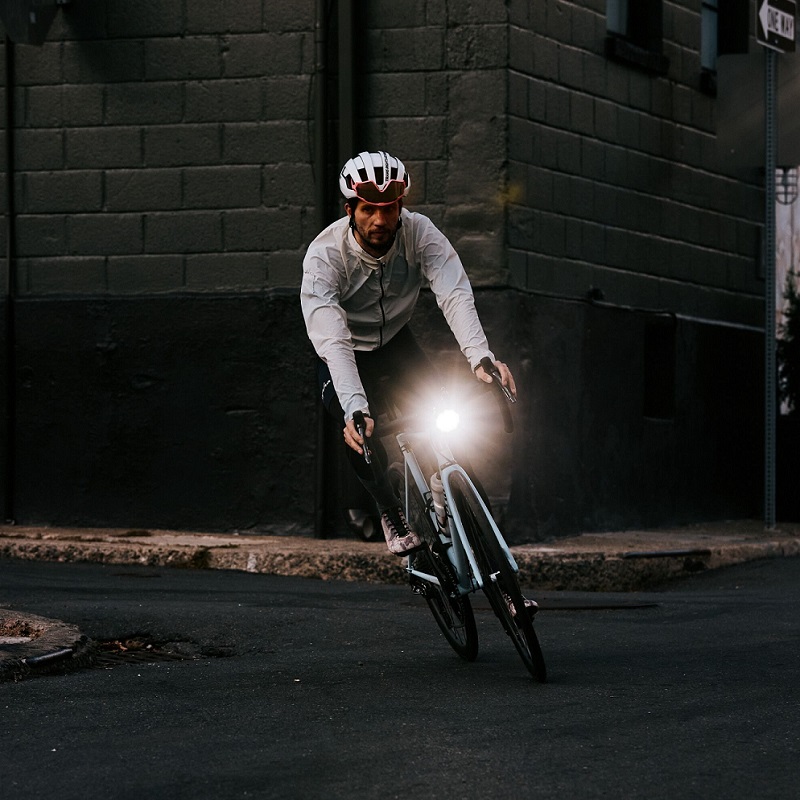
Battery Types and Lifespan
Understanding the various battery types used in road bike lights can significantly impact your riding experience.
Common Battery Types
- Rechargeable Batteries: Many modern bike lights come with built-in rechargeable batteries, offering convenience and sustainability. These lights are typically powered via USB and can last several hours on a single charge. This option often results in lower long-term costs and is environmentally friendly.
- Replaceable Batteries: Traditional bike lights often use disposable batteries, which may be cost-effective initially. However, keep in mind that the ongoing cost of replacing batteries can add up, especially if you frequently forget to check your battery levels.
Lifespan Considerations
Pay attention to the expected battery life of your chosen lights. Look for models that offer information on how long their batteries last at different brightness levels. This detail is crucial when planning extended night rides.
- Charging Time: Consider lights that recharge quickly if you plan on using them frequently. A quick-charge feature can be a great asset, especially for commuters who need to recharge lights during a short break.
- Built-in Battery Indicators: Some of the more advanced road bike lights come equipped with battery indicators that display current power levels. This feature helps you plan replacements ahead of time and avoid surprises during your ride.
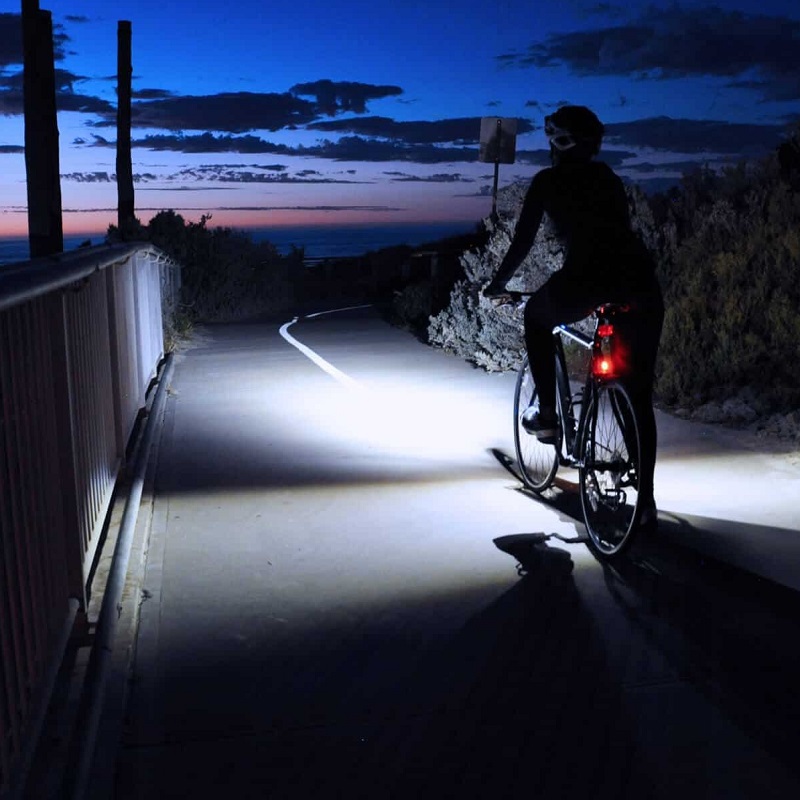
Mounting Options and Versatility
When selecting road bike lights, consider where and how you plan to mount them. A versatile mounting system offers flexibility for installation on different bikes or switching between attaching to your helmet, handlebars, or rear.
Mounting Systems
- Handlebar Mounts: Most front bike lights come with handlebar mounts, securing the light in a position that maximizes visibility. Ensure that the mount is sturdy and easy to attach and detach, particularly if you plan to switch lights between bikes. A mount that allows for angle adjustments can also help you focus the light where you need it most.
- Seat Post Mounts: Rear lights typically attach to the seat post. Look for lights that feature adjustable mount sizes for easy attachment. This ensures a secure fit on different seat post diameters while allowing for quick removal when you need to leave your bike parked. Ensure that the rear light is visible from a long distance, as this safety feature is essential.
Versatile Lighting Solutions
Some road bike lights come with additional capabilities. Some are multi-functional, serving as a flashlight or emergency light source. Consider whether these extra features are worth the investment for your specific needs.
- Helmet Mounts: Helmet-mounted lights provide significant versatility. They turn with your head and illuminate whatever you’re looking at. This feature can be incredibly helpful when navigating tricky terrain or when making quick turns.
- Portable Options: For riders who frequently change routes or modes, consider options that easily transition from bike to a backpack for off-bike use. Ensuring you have adaptable lights makes it easy to carry.
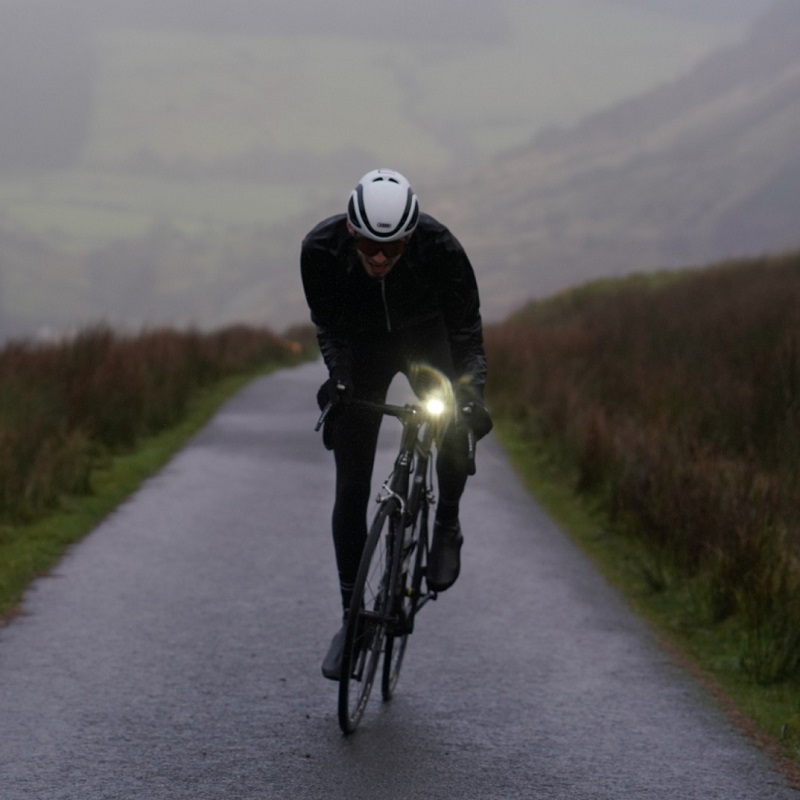
Additional Features to Consider
Beyond basic functions of brightness and mounting, various additional features can enhance your experience and safety when using road bike lights.
Waterproof Ratings
- Importance of Waterproofing: When riding at night, weather conditions can change rapidly. Look for bike lights designated as waterproof or water-resistant to ensure performance in rain or when riding through puddles. This durability will provide peace of mind when cycling in unpredictable weather.
- IP Ratings: Understanding the IP (Ingress Protection) rating can help you determine how well your lights withstand water and dust. An IPX4 rating means the light is splash-proof, whereas IPX7 can handle submersion. Depending on your riding conditions, choosing the right rating can greatly impact durability.
Smart Technology Features
- Bluetooth Connectivity: Some modern bike lights offer Bluetooth connectivity, allowing you to control brightness and flashing modes through your smartphone. Additionally, this technology enables you to track battery levels, reminding you when it’s time for a recharge.
- Sensors for Auto Adjustment: A few intelligent lights are equipped with sensors that automatically adjust brightness based on the surrounding environment. These smart features can add convenience to your ride, adjusting to light levels without needing your input.
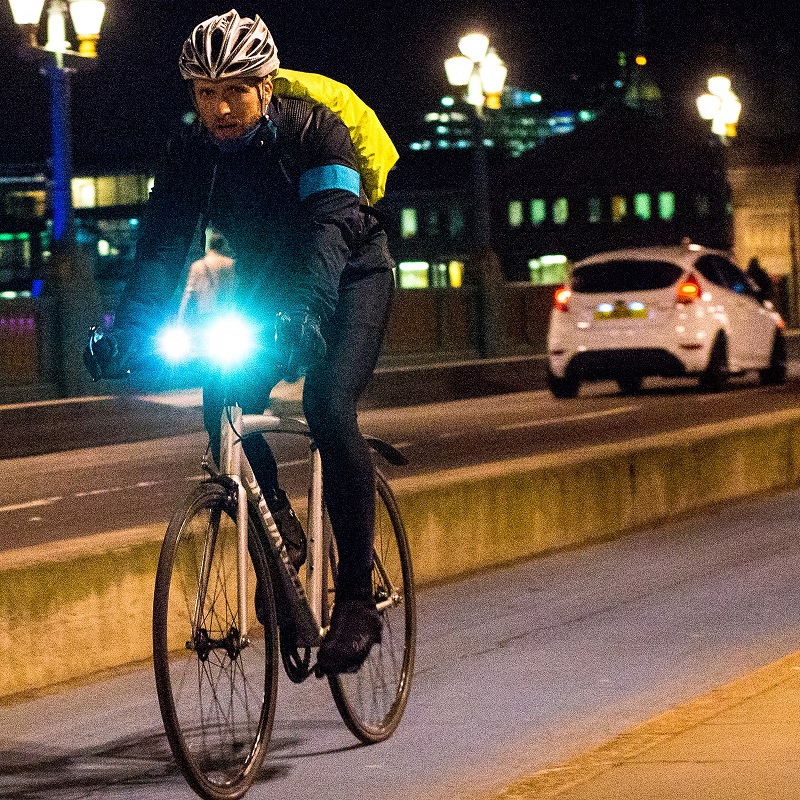
Safety Tips for Riding at Night
Equipping your bike with high-quality road lights is just one aspect of maintaining safety while cycling at night. Here are some additional safety tips to keep in mind.
Wear Visible Clothing
Wearing bright or reflective clothing can enhance visibility during night rides. Consider investing in cycling jackets or accessories that reflect light. These precautions help motorists and other road users spot you quickly, improving overall safety. The color and material of your clothing can make a significant impact after sunset.
Maintain Your Lights
Regularly check your road bike lights to ensure they are functioning correctly. Before each ride, inspect both front and rear lights for any issues, and keep spare batteries or a backup light on hand for emergencies.
- Storage and Transportation: When not in use, store your lights in a dry, safe place to prevent damage. Additionally, avoid leaving electronics out in extreme weather to extend their lifespan.
Choose Well-Lit Routes
Whenever possible, choose well-lit routes to minimize potential hazards. Familiarize yourself with your riding paths during the day so you can identify potential obstacles or dangers you may encounter at night.
- Plan Your Routes: Utilize cycling apps that help you find safe and well-lit paths, ensuring you are not taken through poorly lit areas that may present dangers.
Choose the Right Road Bike Lights for Safer Night Rides
In conclusion, understanding road bike lights is crucial for enjoying safer night rides. Whether you are commuting in an urban environment or taking on dark trails, selecting the right lights can significantly enhance your visibility and safety.
By considering the types of lights, lumens, battery lifespan, mounting options, and additional features, you will be better equipped to make an informed decision. Prioritize safety by implementing smart practices, and always ensure your bike is adequately equipped for night rides.
With the right road bike lights and proper safety precautions, you can confidently enjoy cycling after dark. Embrace the adventure, stay visible, and make every night ride memorable!
